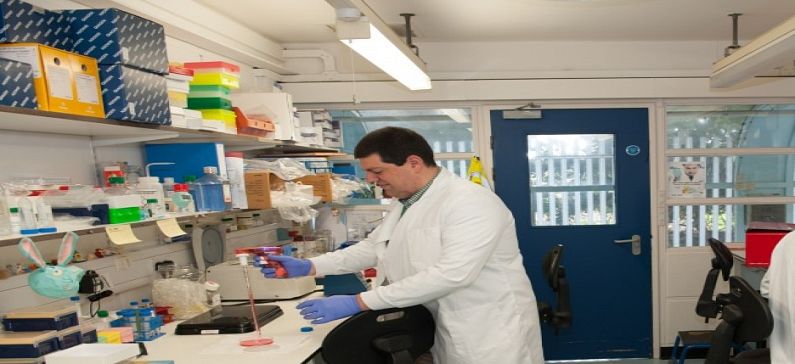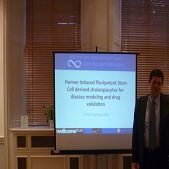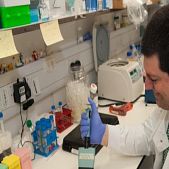
He created artificial bile ducts
Fotios Sampaziotis is an MRC-Sparks clinical research fellow in hepatology at the Department of Surgery at the University of Cambridge and at the Wellcome-MRC Cambridge Stem Cell Institute. The Greek researcher with his team created artificial bile ducts that could be used in the future to help treat liver disease in children, reducing the need for liver transplantation.
“One of the problems is that we couldn’t grow bile duct cells in the lab. By achieving that, we have a tool that can not only can be used for Alagille syndrome but can be easily transferred to many other diseases. It can be used for the first time as a platform to screen drugs and identify a drug that could prevent disease progression. Our main goal is to look at how the disease progresses, what else is there that may cause the disease to advance because clearly there must be something else other than the single gene mutation. If we find it, then we are going to be able to develop new diagnostic tools and new treatments”.
For the first time, researchers used stem cells to grow fully functional three-dimensional bile ducts in the lab. Bile ducts act as the liver’s waste disposal system and malfunctioning bile ducts are behind a third of adult and 70 per cent of children’s liver transplantations. The University of Cambridge research team, led by Professor Ludovic Vallier, Dr Fotios Sampaziotis and Dr Kourosh Saeb-Parsy, extracted healthy cells (cholangiocytes) from bile ducts and grew these into functioning 3D duct structures known as biliary organoids. Collaborating with colleagues in the university’s engineering department, the team tested whether the biliary organoids could be grown on a 3D structure made from collagen which could be shaped into a tube. After four weeks, the cells had fully covered the miniature scaffolding, resulting in artificial tubes with the main features of a normal, functioning bile duct. These artificial ducts were then successfully used to replace damaged bile ducts in mice. The research paper was published in Nature Medicine.
“This demonstrates the power of tissue engineering and regenerative medicine,” Dr Sampaziotis explained. “These artificial bile ducts will not only be useful for transplanting, but could also be used to model other diseases of the bile duct and potentially develop and test new drug treatments.”
The researchers used their ‘miniature bile ducts’ to test new drugs for biliary disease, leading to the discovery that VX809 – an experimental compound originally designed to treat the effects of cystic fibrosis in the lungs – could be the first treatment to prevent the damage cystic fibrosis causes to the liver and bile duct.
“Treating liver complications caused by bile duct disorders constitutes a major challenge – with the only treatment option often being liver transplantation. Identifying a new experimental drug that could prevent patients with cystic fibrosis from undergoing a liver transplantation could have huge implications for our patients. But, this treatment will need to be tested in clinical trials before it can be recommended to patients,” Fotios Sampaziotis said.











douglas carlson
-02/11/2021 5:42 am
I had a liver transplant due to PSC = 22 years ago
the PSC has returned.
I would like to support your Bile Duct research any way that
I can.
thank you,
douglas Carlson
Littleton, colorado